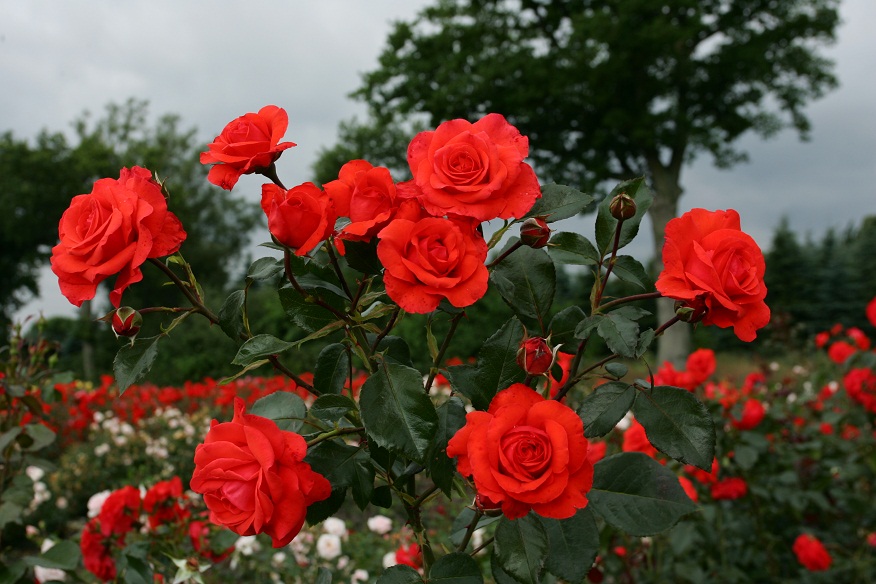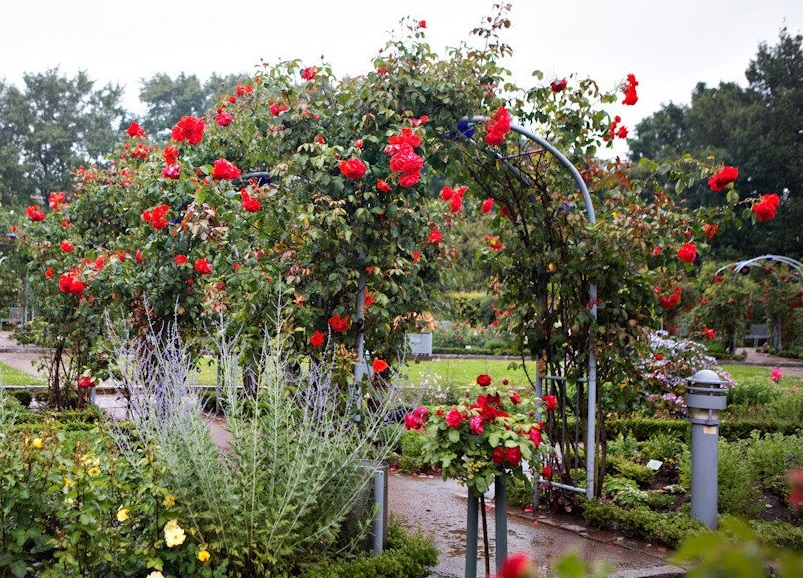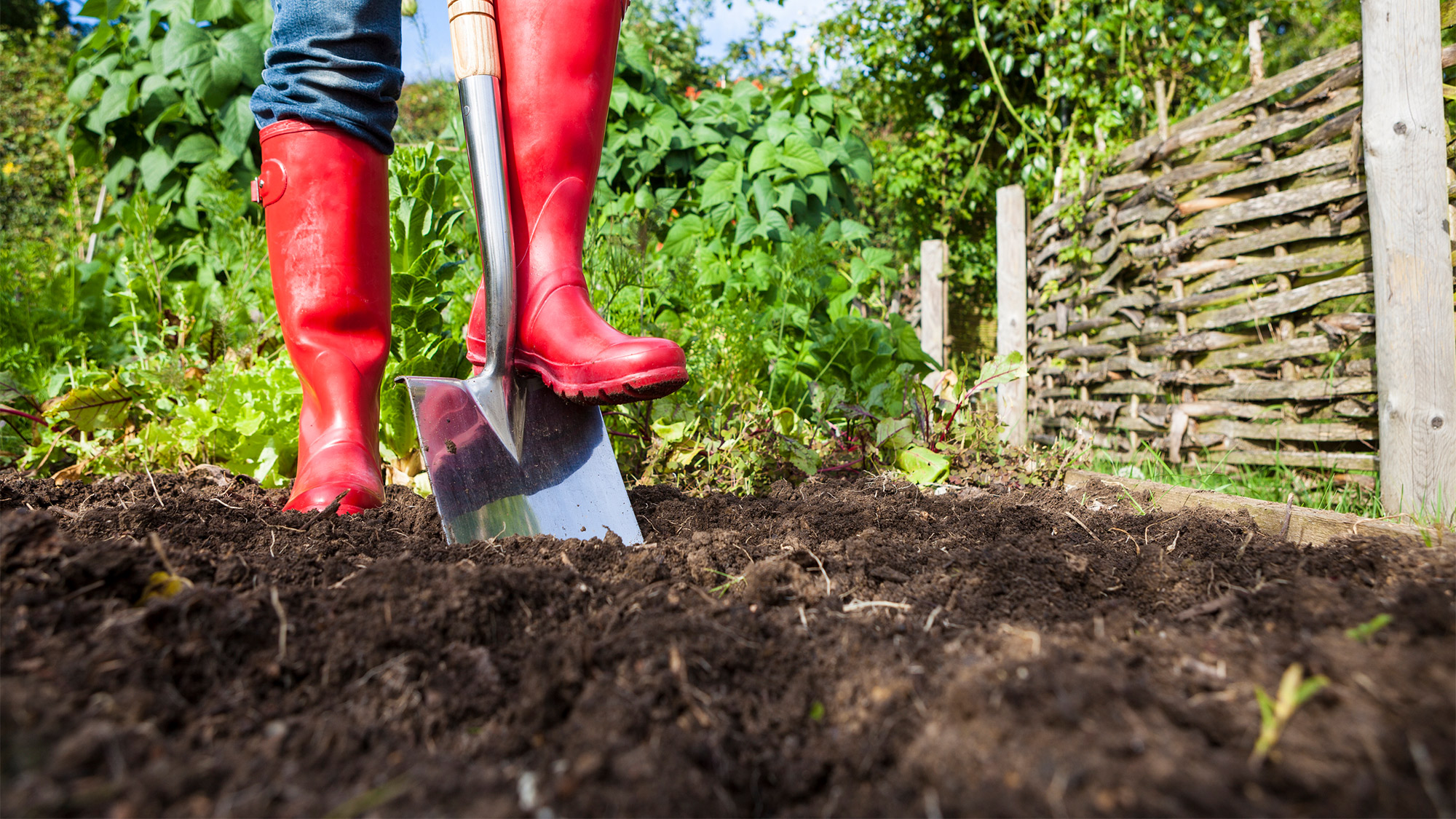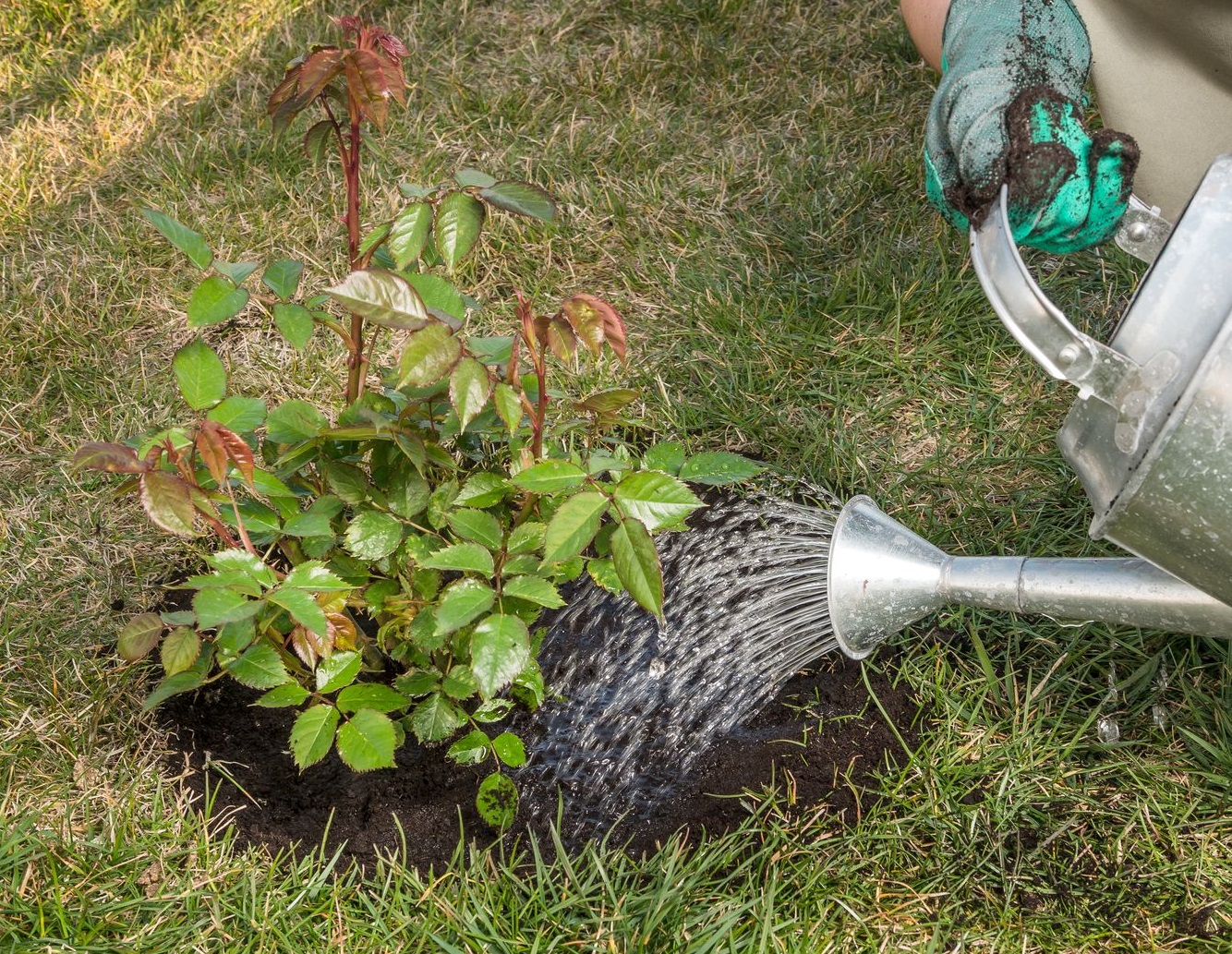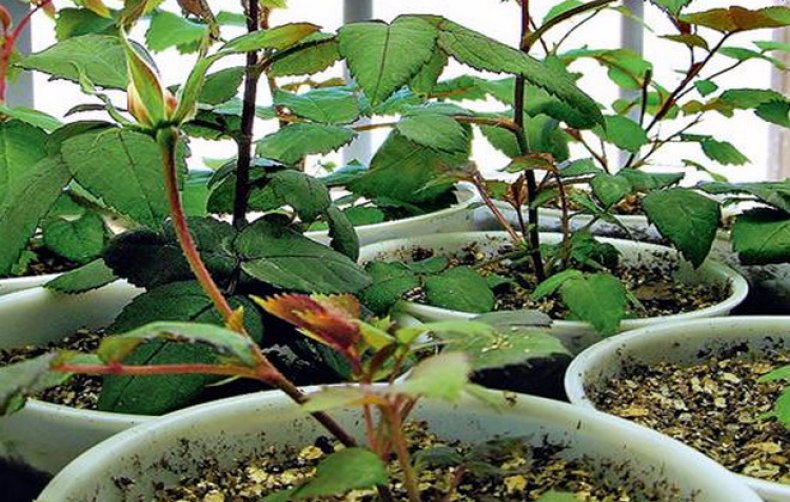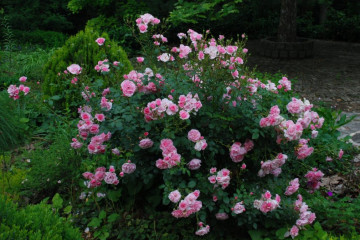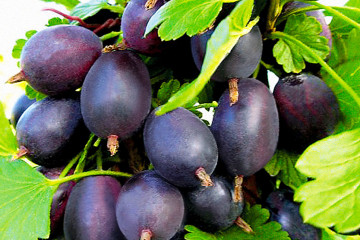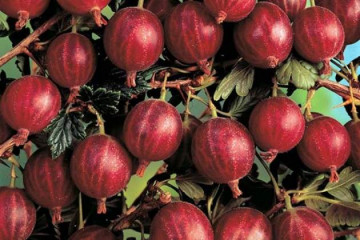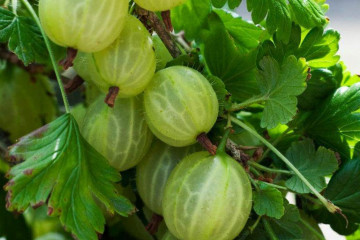Rose Salita (Salita) - characteristics and features of the bush
Content:
The climbing rose Salita is one of those varieties that have long attracted attention and cause an enthusiastic reaction with their lush scarlet flowers. When looking at them, there is a clear comparison with flames. Decorativeness and unpretentiousness make it a welcome guest on the private plots of Russian gardeners.
Rose Salita
Salita is a rose belonging to the climber group. The breeders of the old German nursery Wilhelm Kordes introduced this variety to the world in 1987. KORmorlet is the second name of the plant.
Sprawling Salita bushes with long, strong shoots and large dark green glossy leaves reach 2.5-3 m in height and 1.5 m in width. The rate of development of a plant depends on the climate in which it grows: the colder, the slower the growth. This can be considered the only drawback, not so significant, given that in the first year of life it is better to avoid flowering by removing the buds.
On young stems of a purple hue, bright orange-coral double flowers are poured, neatly shaped up to 9 cm in diameter, can be collected in inflorescences up to 5 pieces. Possesses the external characteristics of tea and hybrid tea varieties. The aroma is light, with fruity notes. The flowering process is long and almost continuous at all levels of the bush. Possesses good frost resistance (down to -26 ° C) under the condition of shelter. According to the description, it is resistant to pest infestations, undemanding to care for, and tolerates rainy weather well.
The Salita variety is suitable for vertical gardening and allows you to decorate the walls of buildings, decorate a garden arch or a gazebo. Looks great in a single planting in the middle of a lawn or, on the contrary, in a company with ground covers, preferably white: verbena, phlox, alissums and others. It goes well with conifers.
Growing a flower
Seedlings are planted in lighted areas, in well-drained soil, timely fertilizing. The best period for planting in mid-latitudes is autumn (late September - early October). In a couple of weeks, the Solita rose has time to give the first roots, which adapt even before the onset of the first frost. With the arrival of spring, the root and ground parts are actively growing, as much as possible for slow-growing varieties.
Speaking about pruning seedlings, they mean shortening 3-5 strong shoots to 15 cm, weak shoots are cut off entirely. The roots are subjected to the same procedure, leaving only a small bunch. Further, the places of the cuts are treated with charcoal dust, the roots are soaked in a growth stimulator.
Any roses prefer loose loamy fertile soil that is easily permeable to moisture. If heavy clay or sand predominates on the site, then they should be diluted with the opposite type of soil. Adding lime, humus, humus, phosphorus fertilizers to enrich the soil and make it even more suitable for growing this garden crop. The site intended for planting should be dug up several times in late summer and spring.
The planting procedure is as follows:
- Choose a planting site with a slight slope to ensure that there is no stagnation of moisture. A site near the wall of a building or any other vertical support that will protect the plant and allow it to develop normally is suitable. However, the distance between the wall and the seedling should be at least 60 cm so that the long roots of the rose do not undergo too rapid depletion.
- The soil is dug to a depth of 65 cm, a rather large hole is formed so that the plant does not have a deficit in space, and organic fertilizers are introduced into it. If a group planting is planned, then 50 cm are left between the bushes of medium size, and large seedlings are placed about 1 m from each other.
- The pit is drained, fertile soil is poured with a slide with the addition of fertilizers.
- The roots of the seedling are lowered into the hole, deepening the root collar into the soil by 10–12 cm, which will provide additional warming of the plant for the winter.
- The roots are freely placed in the pit, covered with earth to the surface, filling the voids, trampled down a little.
Salita is a climbing rose. Therefore, in addition to standard care actions, including watering, weeding, fertilizing, loosening, mulching the soil, autumn and spring pruning of the bush and removing faded inflorescences, it also requires a garter.
Plant care
Forming a bush, branches are placed not only vertically, but also in a horizontal plane or diagonally, otherwise the plant will quickly become impoverished, releasing buds only on the uppermost tier. The fan-shaped arrangement of branches is very popular, or you can also spirally twist the branches around a round support (for example, wrapping them around the gallery columns) so that the branches do not interfere with each other.
Watering and feeding
Solita is watered, like most roses, 1-2 times a week so that the soil around is soaked 0.5 meters deep. In the first year of the plant's life, fertilizing is carried out monthly in the following sequence:
- water with bird droppings - 1/20;
- water with cow dung - 1/10;
- wood ash solution.
An adult shrub requires regular feeding at least 6 times per season, with intervals of 2-3 weeks. It is recommended to use the following scheme:
- in early spring - urea solution (20 g per bucket of water);
- ammonium nitrate (30 g per bucket of water);
- complex mineral fertilizer before bud formation;
- cow dung solution at the very beginning of flowering;
- re-feeding with minerals - after the end of flowering;
- at the end of the summer season, double feeding with superphosphate (20g per bucket of water) and potassium salt (10x10).
Pruning
Regular pruning is essential to keep the bush healthy and bloom lush. At the same time, dried branches, shoots that have not given flowers and old lashes, which are more than 4 years old, are removed. The rest of the shoots are shortened to 5 buds, which is quite enough for the development of the bush and its abundant flowering.
Blooming rose
The widespread Solita bushes bloom continuously throughout the growing season. Correct placement of lashes and adherence to agricultural technology in general ensures an abundance of flowering. If this variety refuses to bloom, then you should pay attention to the timeliness and completeness of the care measures described above.
Flower propagation
Climbing roses can be propagated by seed, layering, cuttings and grafting. The simplest methods are layering and cuttings. But for seed growing, it is better to use store-bought material. Having collected the seeds yourself, you need to be prepared that the new plant may lose varietal characteristics.
Regardless of how the seeds are obtained, germinate them in this way:
- Spread out in a sieve and place for half an hour in a bowl with hydrogen peroxide to disinfect and protect from mold during the period of stratification.
- The seeds are laid out on pieces of cloth soaked in peroxide and covered with another layer soaked in peroxide.
- The tissue with the seeds is placed in a plastic bag, the bag in a container.
- The container is signed and placed in the refrigerator.
- The condition of the seeds is checked regularly. If mold appears, repeat the soaking procedure in peroxide, change the fabric and put it back in the refrigerator.
- After 1.5-2 months, each seed is transferred to a separate peat pot, mulching the surface with perlite to protect it from the "black leg".
- Pots with seedlings are placed where they will be provided with a long daylight hours - at least 10 hours, and watered as the soil dries.
Leaving continues until spring. During this time, the plants must be fed with complex minerals.
If everything was done correctly, then about 2 months after planting, buds may appear at the seedlings, which are best not allowed to bloom so that the root system has time to strengthen.
Diseases, pests and ways to control them
Salita resists disease quite well. The exception is fungal infections, to which she is still susceptible. However, infection can be easily avoided by observing all the same rules of care: avoiding waterlogging, pruning and providing sufficient lighting.
Faced with powdery mildew or black spot, they can be dealt with with "Fitosporin-M", "Bayleton" and other fungicidal preparations.
This variety is rarely affected by harmful insects. An excellent preventive measure is ivy decoction or a soap-garlic solution that is sprayed on the bush. It is enough to sprinkle the trunk circle with tobacco dust.
Having provided care and good care for the fiery beauty, it is easy to find bright scarlet bushes on your site, which will cause the envy of neighbors and friends.
